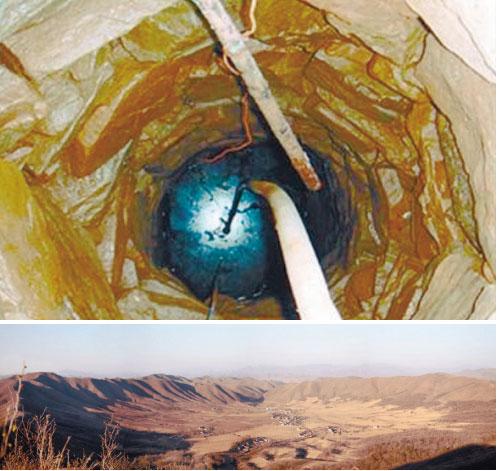China's first confirmed crater stirs debate
China's first confirmed crater, in Xiuyan, Liaoning Province, is sparking controversy since it was verified last month by a team of researchers with the Chinese Academy of Sciences.
 |
|
Xiuyan crater [Photo: sina.com] |
Xiuyan is located in a region of low mountains and hills, close to the Shaozi River. The bowl-shaped crater is 1,800 meters wide and has an average depth of 150 meters. Its discovery ended a decades-long search that began after the Barringer Meteor Crater in Arizona, U.S., became the first confirmed crater in the world in the early 1960s. While more than 170 craters have been identified all over the world, none of them were in China.
But now, the curator of the Jilin Meteorite Museum in neighboring Jilin Province, says craters have been found in "many places" of China, including Jilin. Ding Hongyi, the curator, did not name the specific places of any alleged craters. Jilin is famous for having meteor showers, and the museum exhibits thousands of meteorite samples and pieces. The Jilin No. 1, the largest meteorite in the world, weighs 1,770 kilograms and has attracted 5 million visitors over the past 30 years.
Sun Keqin, a geographer at the China University of Geosciences, said the crater was verified through scientific measures that cannot be refuted.
"Everyone wants to lay claim to being the home of the first meteor crater," Sun said. "The local government has put a lot of emphasis on getting economic benefits for developing tourism through these craters."
Indeed, Xiuyan officials are already scrambling to develop the crater for tourism and research. They said the initial development plan has been finished with plans to establish a geological park. Chen Ming, the leader of the research team that discovered the crater, said the crater will help for studies into Earth's formation and evolution, as well as probes to the moon and into outer space.
Chen, who works at the Chinese Academy of Sciences' Guangzhou Institute of Geochemistry, has been looking for a crater in China since 2006 after more than a decade of research on the impact of celestial bodies, which include meteors. He and his team began drilling at the site of the Xiuyan crater in March 2009 after targeting the Liaoning area for his first place to look. Several scientists before Chen had explored Xiuyan before – in 1982 and 2000 – but none had ever produced any evidence of a crater.
It took only six months for Chen and his team to find some. In a sample taken from deep underground, they found coesite, a mineral rock that forms under very high pressure, providing strong evidence for a meteorite impact event.
"I was lucky," Chen said. "I found all the evidence I need in this one hole."
Geologists usually drill five to six holes in a line for rock samples to boost their chances of finding what they need. Chen drilled only one hole, 11 centimeters wide, in the middle of the crater.
Chen said that according to estimations, the diameter of the meteorite that formed the crater was less than 100 meters, while the energy from the blast would have been insufficient to pierce through the Earth's crust. He said that no chemicals could have been released to form minerals, but the impact was large enough – the equivalent of 400 to 500 Hiroshima atomic bombs – to vaporize the meteorite.
 0
0 







Go to Forum >>0 Comments